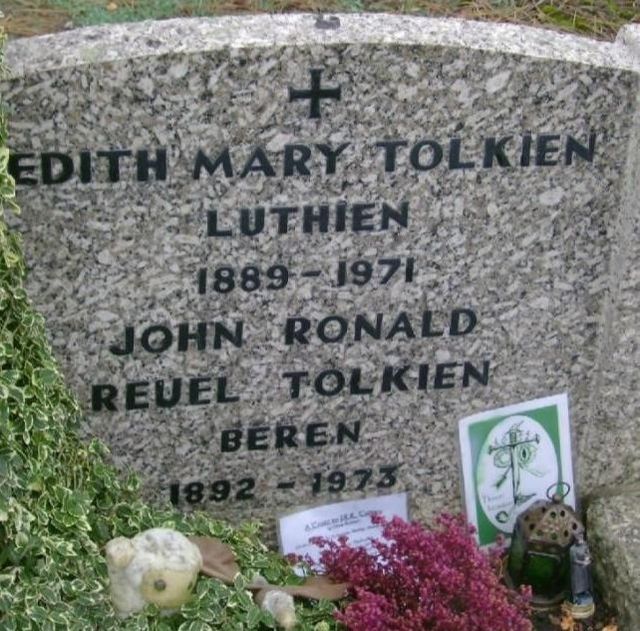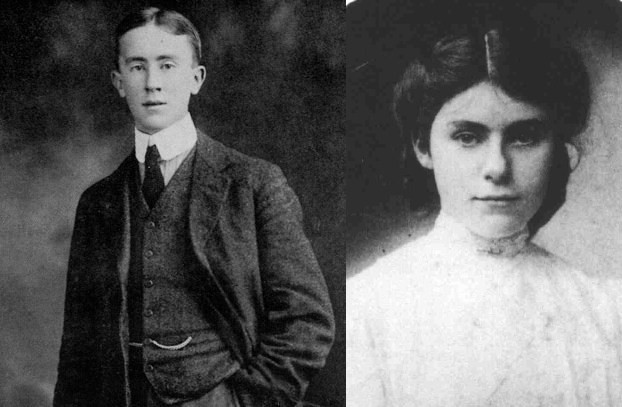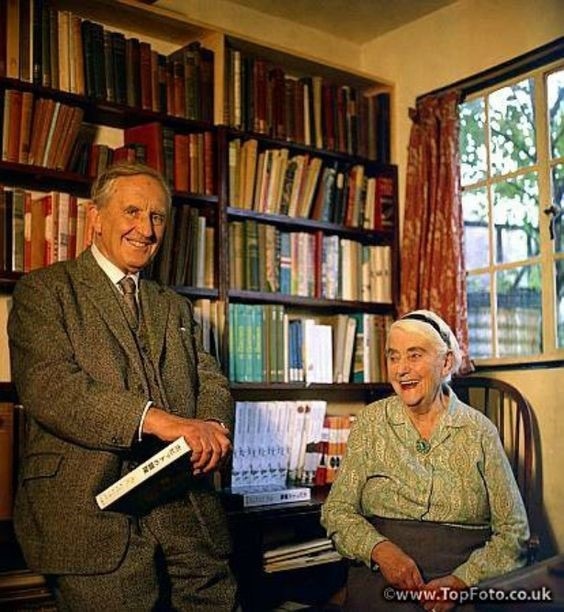 Imagine you see a beautiful bouquet of roses. They are striking, taking your breath away. You draw closer, and with each fine detail of color, fragrance, and texture you become more enchanted. Not caring about the price, they become yours. Your happiness is real, but after bringing them home, you get distracted by a pile of work, dirty dishes, and Instagram alerts calling your name. Instead of trimming, watering and placing the bouquet in a vase, you leave them on the counter. By the time you remember them they are wilted, limp, and unattractive. How did your powerful infatuation sag into complacency? Romantic love is more intoxicating than the rich beauty of roses. In a fifth-of-a-second glance at a potential mate, the brain feels a thrill. A neurological cocktail of adrenaline, dopamine and oxytocin floods the head and lights up the eyes. It is powerful and exciting, and makes us act with abandon, as it did for one giddy fifth grader whose love note (names changed) went viral: Dear Lexi. Your eyes remind me of the evening sky. My heart felt like broken glass until I saw you, and then I felt like I had every Pokémon ever. I love how you play Zelda even when people think it's weird. If you liked me it would be my first ever victory. Love Jake. During Valentine’s season, we celebrate the passion of love by spending approximately 19.7 billion dollars (2016 numbers) on chocolate, pedicures and little message-stamped hearts that look and taste like sidewalk chalk. The holiday is named for St. Valentine who, as legend reports, was a priest in third century Rome. At that time, the emperor made a decree that young men should remain single to focus on their military pursuits. Valentine defied the emperor by marrying young lovers in secret. Eventually, he was found out and put to death. We revere his legacy now by grabbing and gifting plastic-wrapped flowers. But flowers and passion can wilt. Fortunately, there is more to love than the fires of passion. Love in its complete form has two parts: passion and friendship. Love often begins with excitement, but it is maintained by being planted in a stable bond. In the brain, these two states light up in different but overlapping areas. Early excitement activates in the brain as desire, ecstasy, and goal-directed pursuit. But the brain’s response to a cherished long-term spouse looks like contentment, caring, and nurturing. Many relationships go cold because one or both of these sides of love are neglected. This happened with married clients I will call Victor and Vicky. They were in a rut. Victor had been downsized and was working a low-paying temp job, and they were behind on their mortgage. Vicky was working part-time at a call center, but her shift was early, while Victor’s lasted until 9:00 each night. On top of that, their son’s grade school was calling them regularly because of his disruptive behavior. "He has that ADHD,” explained Vicky, “but he has a whole lot of the H.” Victor and Vicky were frustrated with their son, and each other. They had lost the silly humor and close relationship they once enjoyed, and now mostly passed grumbling in the night. When I asked what types of fun they used to have, they described going to social gaming groups, and playing as a couple. “We loved board games,” Victor said, “but now we are just bored.” Love often begins with excitement, but it is maintained by being planted in a stable bond. These two accepted the challenge to schedule time to talk, have fun, and cuddle. They worked on using supportive words rather than grunts or nods. Research has found that couples who remain close over years are those who support each other’s interests, growth, and feelings. Spouses who respond to each other’s words positively are also more physically attracted to each other. Just being nice is connected to being passionate. Another study found that for both husbands and wives, the biggest factor in how satisfied they felt about the sex, romance, and passion in their relationship was the quality of the their friendship. Victor and Vicky didn’t need Caribbean cruises or diamonds to revive their relationship, they just needed to act like good friends and respond to each other with kindness and attention. Passion and friendship are related, and both can be strengthened. Victor and Vicky recommitted to a once-a-week date, pulled out their Monopoly board, and got their work schedules in sync. This increased the quality and quantity of their time together, and they once again felt close. How is your relationship doing? Is it rooted in a rich friendship? Are you feeling passion? It may need some tender loving care. A relationship that is nourished with love will stay fresh and alive for a lifetime. References Acevedo, B.P., Aron A., Fisher, H. E, & Brown, L. (2012). Neural correlates of long-term intense romantic love. Social Cognitive and Affective Neuroscience, 7, 145-159. Ortigue, S., Bianchi-Demicheli, F., Patel., N., Frum, C., & Lewis, J. W. (2010). Neuroimaging of love: fMRI meta-analysis evidence toward new perspectives in sexual medicine. The Journal of Sexual Medicine, 7(11), 3541-3552. Gottman, J. M. (1999). The Marriage Clinic. Sage. This was first posted in the Institute for Family Studies Blog: http://family-studies.org/true-love-is-passion-rooted-in-friendship/ And he took her in his arms and kissed her under the sunlit sky, and he cared not that they stood high upon the walls in the sight of many. ― J.R.R. Tolkien, Return of the King John Ronald Reuel Tolkien is known worldwide for his fantastic characters and creations. His hobbits, dwarves, elves and warriors have changed the face of literature and culture. As a boy, he had unusual interests. He loved reading mythology, playing chess, drawing fierce dragons, and by age 9, young Ronald (as he was usually called) had invented several languages. Well-known is Tolkien’s prodigious geek cred, but less known is that he was a hopeless romantic. He grew up in England in the early 1900s in difficult circumstances, having lost both his father and mother by his mid-teens. Taken under the guardianship of Father Francis, a Catholic priest, young Ronald became lonely and contemplative. At 16, he and his brother moved into a small apartment, where downstairs was a girl that would change Ronald’s life. Edith Bratt was a pretty nineteen-year-old, with light grey eyes and a flair for music. Ronald was lovestruck. Edith’s interest was piqued, and she began to befriend the Tolkien brothers. Ronald would lower a basket from his window, and Edith would load it with snacks. The food depletions must have puzzled Edith’s guardian, Mrs. Faulkner, as Edith was slender and less than five feet tall. Over time, Edith was won over by the younger Ronald, and they began spending their spare time together. They made each other laugh. One amusing pastime was to meet at a rooftop tea room in Birmingham and throw lumps of sugar into the hats of those walking below. When one bowl was empty, they moved to the next table. Their companionship was so consuming, it caused alarm in Father Francis and Mrs. Faulkner (assigned the code name, “The Old Lady” by the pair). The guardians thought the relationship improper and were upset that Ronald was not attending to his studies. To skirt this disapproval, Edith and Ronald invented a whistle call, which would summon the other to the window, where they could talk into the night. One weekend, the two conspired for a meeting in the countryside. They rode and returned separately, but were spotted by a caretaker, who mentioned it to the cook back at the church. Around this same time, Ronald failed his Oxford entrance exams, and Father Francis put his foot down and insisted there be no more courting of Edith. The pair could not be kept apart, however, and they again planned a rendezvous. They plotted well, met secretly, and boarded a train for a getaway. The retreat was to another town where they shopped at a jewelry store, buying gifts for each other’s eighteenth and twenty-first birthdays. Unfortunately, their luck was again cursed, as an observer recognized them and word got back to Father Francis. This time, the priest was firm and unambiguous – Ronald was to have no contact with Edith until his twenty-first birthday. Tolkien was depressed, but dutiful, and obeyed his guardian’s wishes. Over the next three years, he passed his college exams, and began life at Oxford, playing rugby and studying Gothic, Anglo-Saxon, and Welsh. He did not, however, forget about his Edith. On the eve of his twenty-first birthday, he sat in bed watching his clock. The moment it struck midnight, he began a letter to Edith, pouring out his love, and proposing marriage. After a few anxious days he received a letter back, with the devastating news that she was engaged to a more suitable prospect, George Field. She was getting old (almost twenty-four!) and felt the urgency of time. She also had assumed their long separation had cooled Ronald’s fancies and that he had moved on. Ronald jumped on the first train to Cheltenham, where Edith met him at the station. They walked out into the chilly countryside along the railway viaduct. He made an impassioned case that melted Edith’s heart. She agreed to ditch George, send back his ring, and throw her lot in with the college boy with the strange interests in Beowulf and linguistics. Their marriage was filled with joy, laughter, and four children. One day, the lovers had an experience that lodged so deep in Ronald’s soul that it became a key story in his books. He and Edith were walking in the woods and came upon a clearing filled with flowering white hemlock. She began to dance in the sunshine and it took Ronald’s breath away. Recounting this story to his son many years later, Tolkien wrote: “In those days her hair was raven, her skin clear, her eyes brighter than you have seen them, and she could sing – and dance.” This event inspired the romance between Beren and Luthien, a mortal man and an elf-maiden. In his book, The Sillmarillion, he wrote of the pair: "But wandering in the summer in the woods of Neldoreth, Beren came upon Luthien, daughter of Thingol and Melian, at a time of evening under moonrise, as she danced upon the unfading grass in the glades beside Esgalduin. Then all memory of his pain departed from him, and he fell into an enchantment; for Luthien was the most beautiful of all the children of Iluvatar."
The passion between J.R.R. Tolkien and his beloved Edith is moving, because we all have passion within. Their fierce connection demonstrates the depth of love humans can attain. However, although relationships catch fire with passion, they continue burning through effort and sacrifice. Tolkien understood this, as he reflected about how his marriage to Edith took commitment to stay strong. He said, “Nearly all marriages, even happy ones, are mistakes in the sense that almost certainly … both partners might [have] found more suitable mates. But the real soul-mate is the one you are actually married to.” Despite Tolkien’s passionate nature, he understood that relationships take work: “No man, however truly he loved his betrothed and bride as a young man, has lived faithful to her as a wife in mind and body without deliberate conscious exercise of the will, without self-denial.” Tolkien knew that true love isn’t attained by a flash of ecstatic desire. It takes regular care and attention to the little things. For example, Ronald and Edith loved fussing over each other and giving each other small presents. In their later years, they talked endlessly about their children and grandchildren. Their relationship was built upon passion and friendship, which nourished their love from their early courtship until the end of their lives. Edith died in 1971 at age 82 in Bournemouth, Hampshire, England and Tolkien had the name “Luthien” engraved on her headstone. When he died twenty-one months later, he was buried with her, with the name “Beren” added to his name.  Adapted from Jason Whiting, Love Me True: Overcoming the Surprising Ways We Deceive in Relationships. Cedar Fort Publishing. References Humphrey Carpenter, Tolkien: The Authorized Biography (Houghton Mifflin, 1977). Colin Duriez, JRR Tolkien: The Making of a Legend (Oxford, UK: Lion Books, 2012). Carpenter, Humphrey and Tolkien, Christopher (eds.) (1981). The Letters of J. R. R. Tolkien (London: George Allen & Unwin). Alison Flood, “JRR Tolkien Advised by WH Auden to Drop Romance,” The Guardian, 11 February 2014. Sam Guzman, “Tolkien Speaks: The Secret to a Happy Marriage,” July 13, 2015. Retrieved from http://www.catholicgentleman.net/2015/07/tolkien-speaks-the-secret-to-a-happy-marriage/ Judi Heit, “Edith Bratt Tolkein” 2010. Retrieved from http://classicmuses.blogspot.com/2010/06/edith-mary-bratt.html |
AuthorDr. Jason Whiting is a researcher and clinician who studies deception, honesty and conflict in intimate partners. Archives
April 2020
Categories |


 RSS Feed
RSS Feed